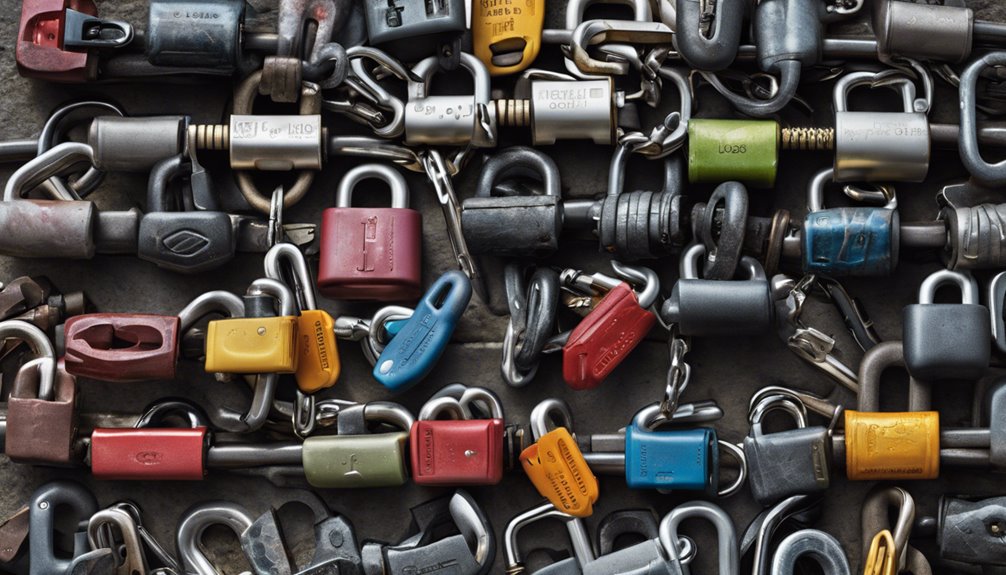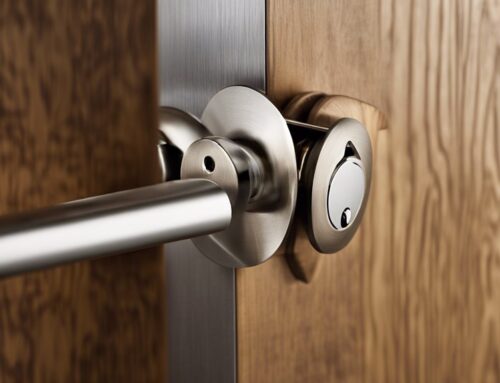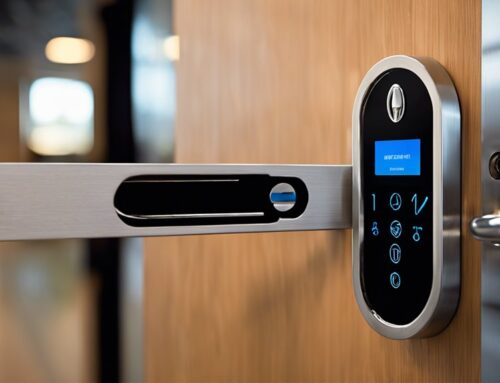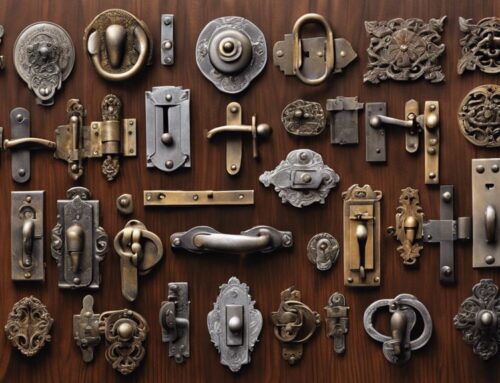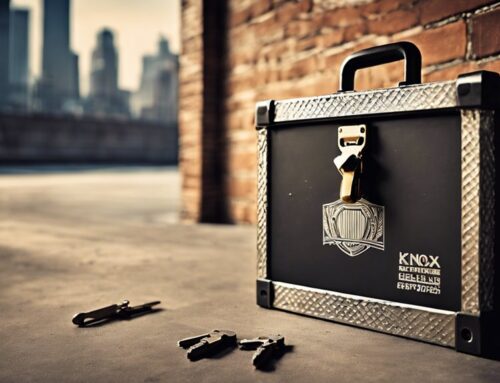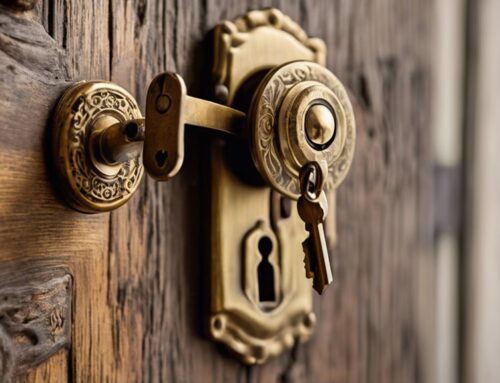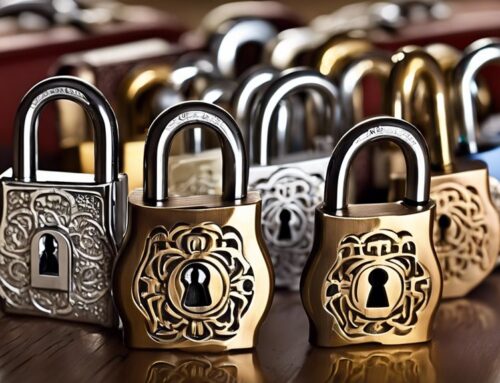When it comes to keeping your bike safe, a bit of foresight can go a long way. You’ve invested in a quality bicycle, so understanding the ins and outs of locks and security measures is essential. Different types of locks offer varying levels of protection, and knowing how to use them effectively can make all the difference. As we explore the best practices for securing your bike, you might find that some strategies are more important than they seem—insights that could help you avoid a potentially costly mistake.
Key Takeaways
- Choose high-quality U-locks or chain locks for optimal protection against theft, especially in high-crime areas.
- Secure your bike to a fixed object and lock both wheels to minimize theft risks.
- Use multiple locks and maintain an elevated, outward-facing locking position to deter thieves effectively.
- Regularly clean and lubricate locks, and inspect for damage to ensure they function properly.
- Register your bike to help law enforcement in recovery, and reduce its appeal to potential thieves.
Types of Bicycle Locks
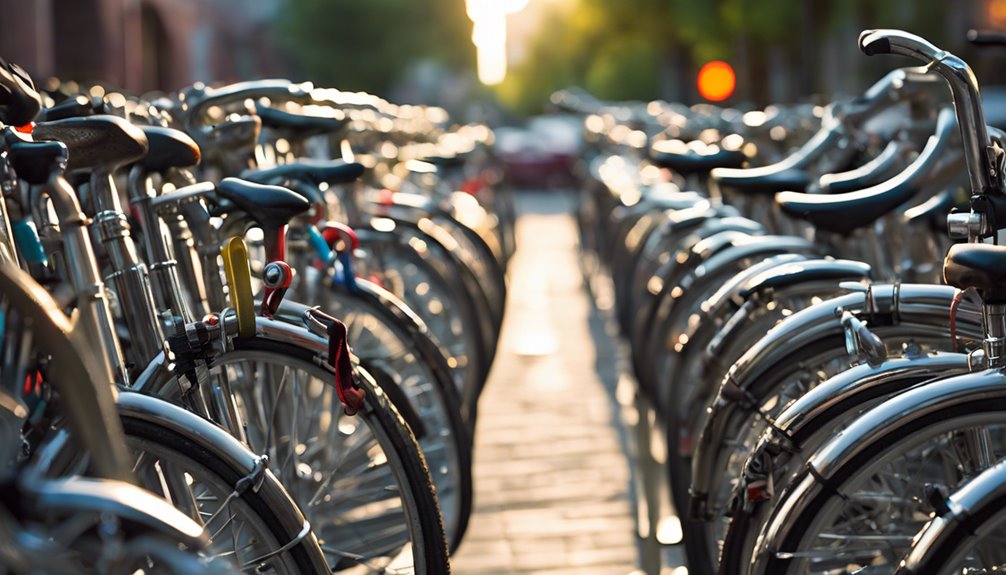
When it comes to securing your bike, understanding the different types of bicycle locks is essential.
You’ve got a few main categories to evaluate: U-locks, chain locks, and folding locks. U-locks are robust and resistant to cutting, making them ideal for high-crime areas. Chain locks offer versatility, often combining a sturdy chain with a lock, but they can be heavy.
Folding locks provide a balance between portability and security, folding into a compact shape while still delivering decent protection. For added security, look for locks with high security ratings.
Ultimately, your choice should reflect your bike’s value and your usual surroundings. Knowing these options enables you to select a lock that best meets your needs.
Locking Techniques
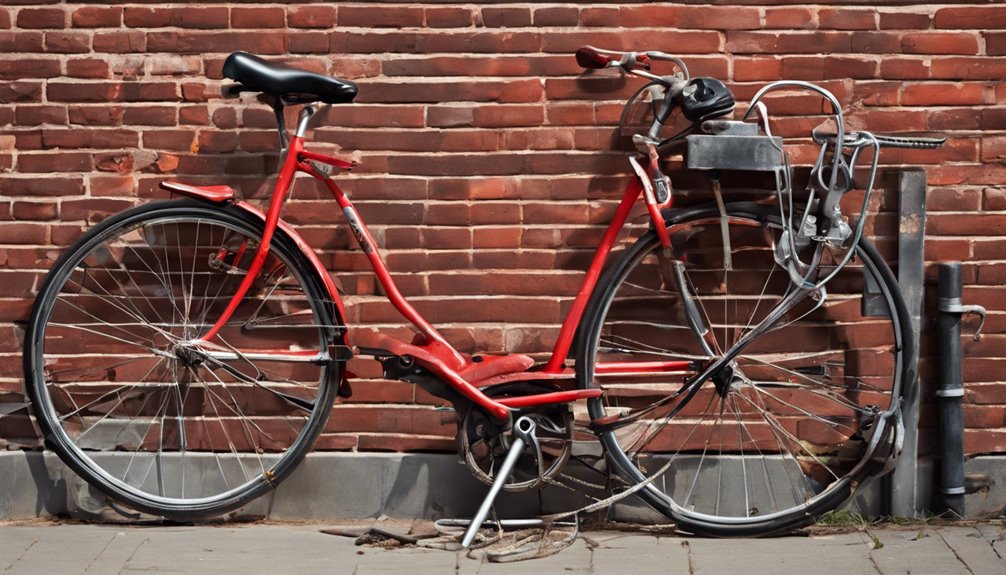
When locking your bike, the position matters considerably; always secure your lock to a fixed object.
Make sure to secure both wheels to minimize theft risk, especially if you’re using a single lock.
Consider using multiple locks to further deter would-be thieves and enhance your bike’s security.
Proper Locking Position
Choosing the right locking position is essential for keeping your bicycle secure.
Position your lock around a solid, immovable object, like a bike rack. Confirm the lock’s body is elevated and facing outward—this makes it harder for thieves to leverage tools against it.
Place the lock through the frame and a wheel to deter quick removals. Ideally, span the lock’s shackle widely while leaving minimal gaps, as this minimizes the risk of bolt cutters fitting inside.
Avoid locking only your wheel, since that can leave your frame vulnerable.
Finally, always check that your lock is positioned away from the ground, as thieves can use leverage to break locks more easily when they’re low.
Prioritize these practices for increased security.
Securing Both Wheels
While ensuring your bicycle’s frame is securely locked is essential, protecting both wheels can greatly enhance your overall security.
Begin by using a U-lock or a heavy-duty chain lock through the frame and both wheels. Position the lock to secure the wheel closest to the bike rack, since this leaves less room for thieves to maneuver.
If your bike has quick-release components, consider using locking skewers to secure the wheels. Additionally, if you’re using a cable lock, thread it through both wheels and the frame, avoiding excess slack.
This proactive approach minimizes the risk of wheel theft and reinforces your bike’s safety. Implement these measures consistently, and you’ll considerably lower your chances of losing valuable components.
Use of Multiple Locks
Using multiple locks can markedly enhance your bike’s security by creating layers of protection that deter potential thieves.
By utilizing a combination of different lock types—like a U-lock paired with a chain lock—you increase the difficulty for thieves, making them rethink their actions. Each lock serves a distinct purpose; U-locks offer robust resistance, while chain locks provide flexibility.
Consider locking different components of your bike, such as the frame, wheels, and saddle. This approach not only makes your bike less appealing but also showcases that you’re invested in security.
Importance of Bike Registration
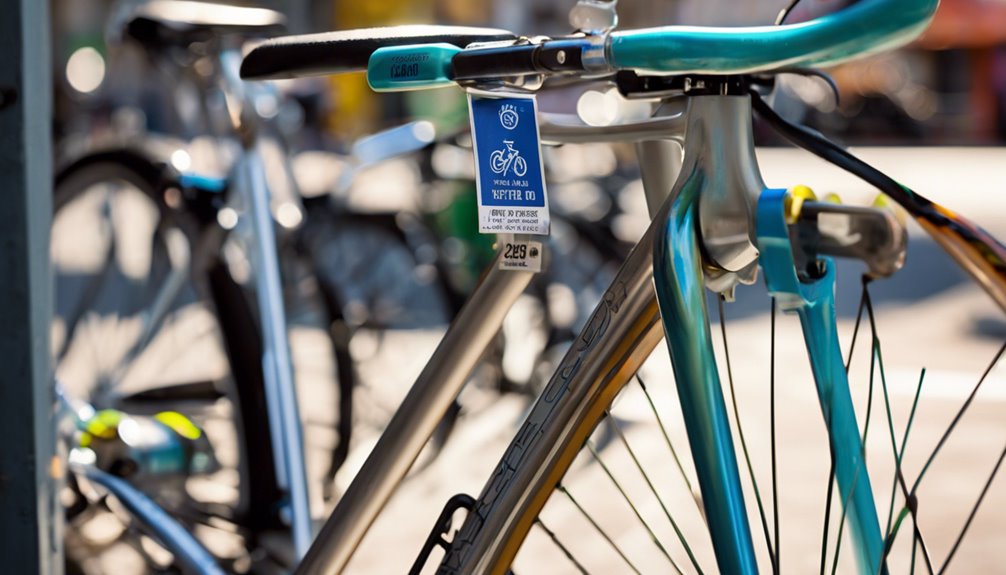
Bike registration is an essential step that enhances security and strengthens ownership claims, transforming a mere bicycle into a safeguarded asset.
By registering your bike, you create a unique identifier that can assist law enforcement in recovering it if stolen. This proactive measure not only discourages potential thieves but also serves as proof of ownership in disputes.
Many localities offer registration programs, making it easy for you to enter your bike’s details into a centralized database. Keep in mind that the registration process is a straightforward way to enhance your bike’s protection without considerable costs.
Ultimately, investing a little time in registration can greatly increase your chances of reclaiming your bike, should the unfortunate happen.
Theft Prevention Strategies
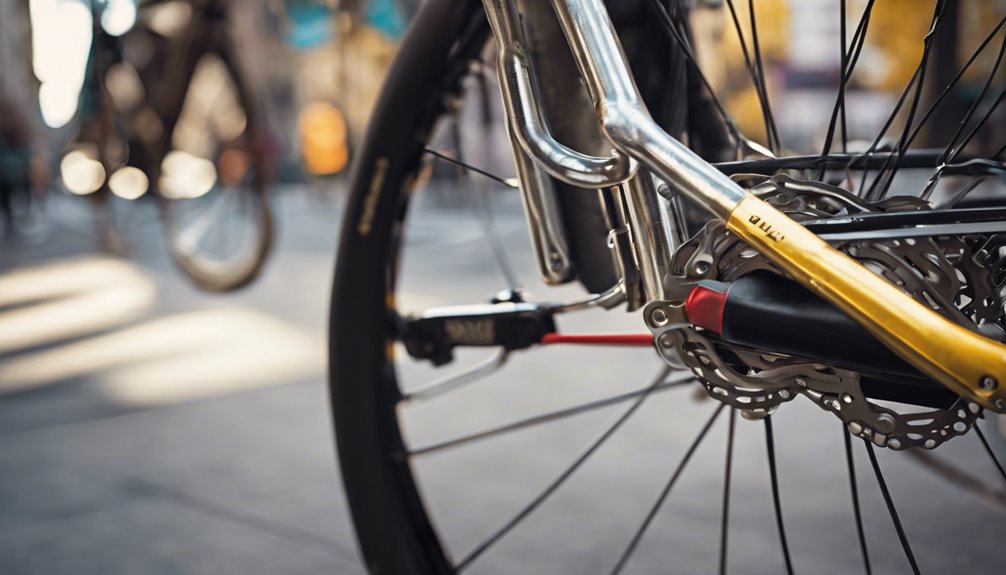
To effectively protect your bicycle from theft, it’s crucial to adopt a multi-faceted approach that combines strong security practices with awareness of your surroundings.
Start by securing your bike with high-quality locks, using both a U-lock and a chain lock for added protection. Always lock your bike to sturdy, immovable objects in well-lit, busy areas.
Be observant; assess your environment for potential threats and avoid leaving your bike unattended for long periods. When possible, register your bike and consider using GPS trackers for added peace of mind. Many smart locks also offer additional security features, including remote access control and notifications when your bike is tampered with.
Finally, keep your accessories minimal; flashy components can attract unwanted attention.
Additional Security Measures
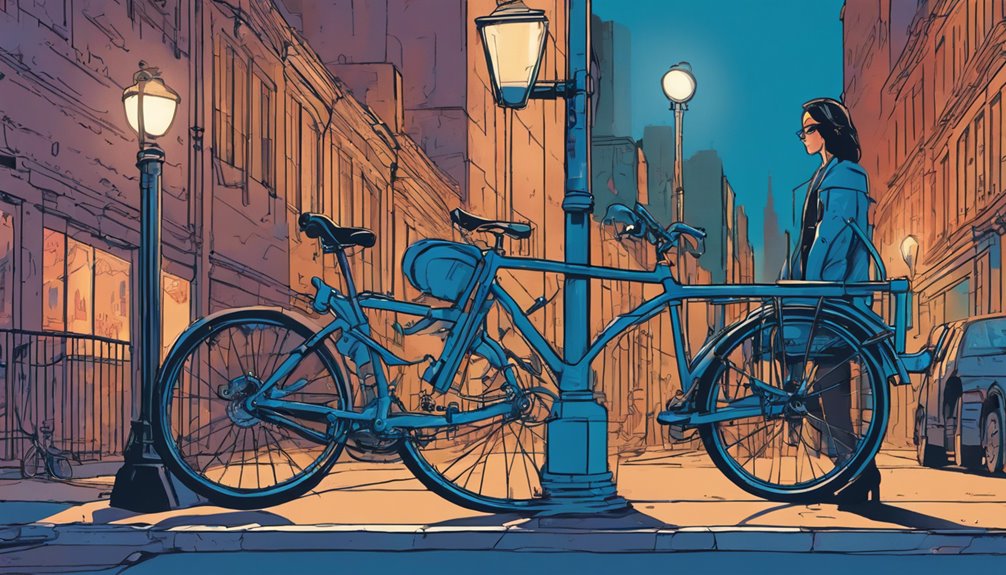
While securing your bicycle with high-quality locks is essential, you can further enhance its safety with additional security measures. Consider investing in a GPS tracker to monitor your bike’s location in real-time. Additionally, using a bike alarm can deter potential thieves by emitting a loud sound when tampered with. Finally, registering your bicycle with local authorities or online databases may increase the chances of recovery if stolen. Below is a table summarizing these measures:
| Security Measure | Description | Benefits |
|---|---|---|
| GPS Tracker | Real-time tracking device | Recovery support, peace of mind |
| Bike Alarm | Motion-sensitive alarm | Immediate deterrent against theft |
| Bicycle Registration | Database registration for bikes | Increases recovery chances if stolen |
Recognizing Theft Tactics
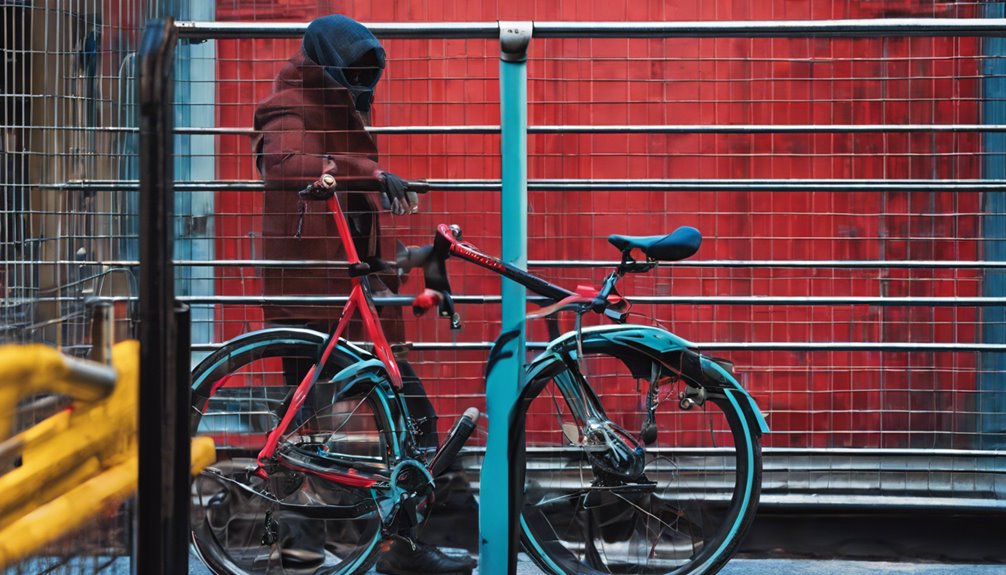
Understanding the tactics thieves use can greatly reduce your chances of bike theft. Thieves often scout areas, looking for bikes that appear vulnerable or poorly secured.
They might use distraction techniques, such as creating a commotion to divert attention while another thief quickly cuts your lock. In some cases, they’ll even pose as fellow cyclists, surveying potential targets under the guise of asking for help.
Take note of common tools too; if someone carries a bolt cutter in plain sight, it’s a red flag. Be vigilant about your surroundings and choose high-traffic locations for parking your bike.
How to Choose a Lock
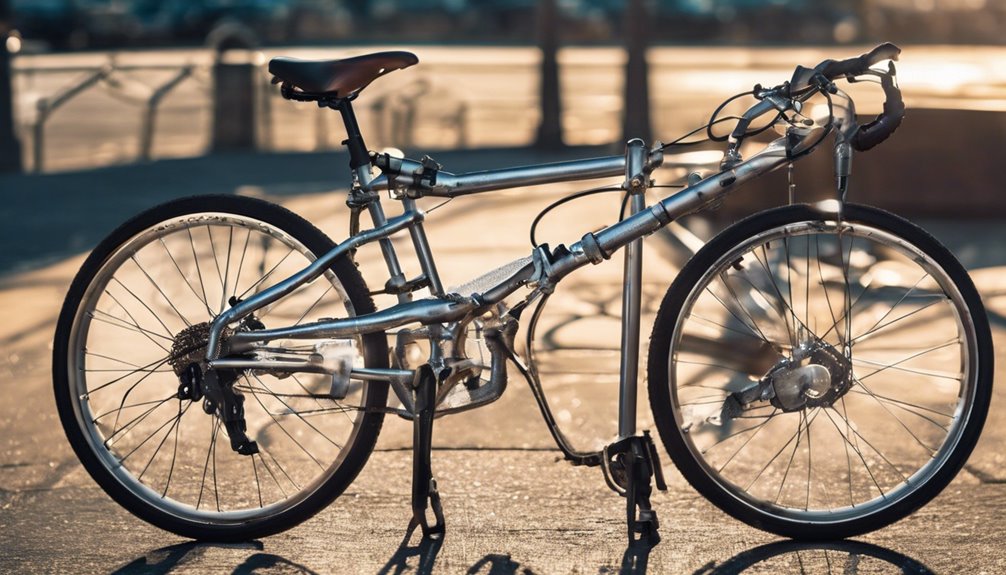
Choosing the right lock for your bike is essential for enhancing its security.
First, consider the type of lock: U-locks provide strong protection against cutting, while chain locks offer flexibility but can be heavier. Look for hardened steel construction, as it resists bolt cutters and other tampering tools.
Check the lock’s security rating; a higher rating often signifies better protection. Evaluate your typical locking scenario: a portable lock for quick errands, or a heavier, more secure option for long-term parking.
Don’t overlook accessories, like locking mounts or reinforced cables for securing wheels.
Ultimately, your choice should balance portability, security, and your specific needs, ensuring you protect your investment effectively while minimizing hassle.
Maintaining Your Lock
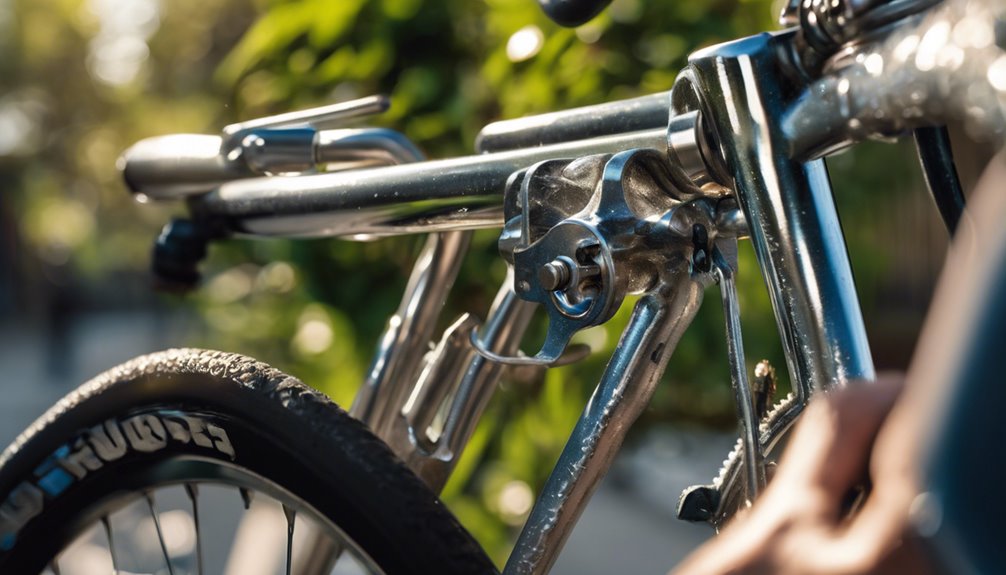
Even the best lock needs proper care to maintain its effectiveness in securing your bike. Regular maintenance helps prevent rust, guarantees smooth operation, and extends its lifespan. Here’s a quick reference to maintain your lock effectively:
| Task | Frequency |
|---|---|
| Clean the lock | Monthly |
| Lubricate mechanisms | Every 3 months |
| Inspect for damage | Before each use |
| Store in a dry place | Always |
| Replace worn parts | As needed |
Additionally, make sure to properly clean the lock to avoid buildup that can lead to rust. To enhance durability, remember that frequent lubrication of locks is essential for preventing jams and ensuring optimal functionality.
Storing Your Bike Safely

When it comes to storing your bike safely, consider both indoor and outdoor options.
Securing your bike at home can protect it from weather damage and theft, while choosing the right outdoor solutions is essential for minimizing risks in public spaces.
Evaluating these storage methods will help guarantee your bike remains safe and ready to ride whenever you are.
Home Storage Options
Storing your bike properly at home not only protects it from theft but also prolongs its lifespan through proper care. To achieve this, consider dedicated storage solutions like wall racks, hooks, or bike stands.
Wall racks free up floor space while keeping your bike secure and visible. Verify the area is dry and well-ventilated to prevent rust or damage to components. If you’re short on space, vertical hooks can be a practical alternative, suspending your bike upright.
Make sure to store your bike indoors, away from extreme temperatures and direct sunlight. Additionally, consider using a protective cover to keep dust and debris at bay.
With these strategies, you’ll maintain your bike’s quality and ready it for your next ride.
Outdoor Storage Solutions
Finding a secure outdoor storage solution for your bike is essential, especially if you frequently ride in urban areas or where theft is a concern.
Consider using a lockable bike shed, as these structures provide excellent protection against theft and weather. If space is limited, a wall-mounted bike rack can be both practical and space-efficient. Secure it with a high-quality U-lock and a secondary cable lock to deter thieves, as high-quality options greatly enhance overall security.
In addition to physical security, make certain your storage area is well-lit and visible, which further discourages theft attempts. A well-lit environment can significantly reduce the chances of theft, similar to how enhancing garage door lock security deters forced entry. Regular maintenance, such as lubricating your lock’s mechanism, will also enhance longevity and security. It’s advisable to also conduct regular inspections to ensure your locks and storage solutions remain effective over time.
Frequently Asked Questions
How Do I Choose the Right Lock Size for My Bike?
To choose the right lock size for your bike, consider the frame geometry and any additional items you want to secure.
Measure the distance between locking points, ensuring the lock fits around your frame and wheel, as well as stationary objects like bike racks.
A lock that’s too small won’t secure everything, while one that’s too large may be cumbersome.
Balance convenience and security by selecting appropriately sized locks tailored to your bike’s dimensions.
Can I Use More Than One Type of Lock Simultaneously?
Using multiple locks simultaneously can enhance your bike’s security, much like a fortress with multiple defenses.
You can combine different types—like a U-lock and a chain lock—for added protection. Each lock has unique strengths and weaknesses, and this practice deters thieves who might only have the tools for one type.
Just guarantee you secure your bike to a solid object, maximizing the effectiveness of every lock you use.
Are There Specific Brands Known for High-Quality Bike Locks?
Yes, there are several brands renowned for their high-quality bike locks.
Brands like Kryptonite, Abus, and OnGuard consistently receive positive reviews for their durability and security features.
These companies utilize robust materials and innovative designs to prevent theft effectively.
When choosing a lock, consider factors like your bike’s value and your usual parking location.
Investing in a reputable brand can give you peace of mind that your bike’s secure while you’re away.
How Can Weather Conditions Affect My Bike Lock’s Performance?
Weather conditions can greatly impact your bike lock’s performance.
Extreme temperatures may cause materials to expand or contract, potentially affecting locking mechanisms.
Rain or snow can introduce moisture, leading to rust and corrosion over time.
If you live in a humid area, consider using locks with corrosion-resistant materials.
Regularly inspecting and maintaining your lock will guarantee it operates smoothly, regardless of the weather, helping you protect your bike effectively.
What Should I Do if My Bike Lock Gets Stuck?
If your bike lock gets stuck, it can feel like you’ve launched into an epic battle against an unyielding fortress!
Don’t panic; first, try applying some lubricant to the keyhole or shackle. Wiggle your key gently as you turn it, paying attention to any resistance.
If that fails, use a blow dryer to warm the lock. If it’s still stuck, consider seeking professional help before causing permanent damage.
Mastery demands patience!
Conclusion
By equipping your bike with the right locks and using effective techniques, you create a fortress against theft. Think of your lock as a trusted shield, guarding your freedom on two wheels. Regular maintenance guarantees this shield remains strong, ready to face external threats. Pairing robust locks with smart parking strategies strikes a balance between convenience and security. Ultimately, the care you invest in protecting your bike reflects your commitment to enjoying every ride with peace of mind.

